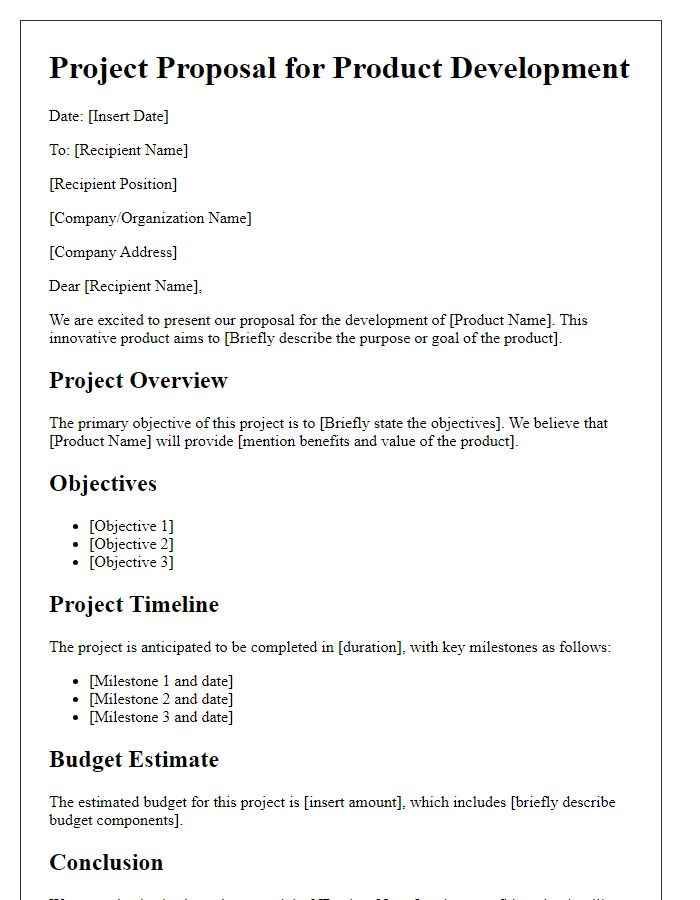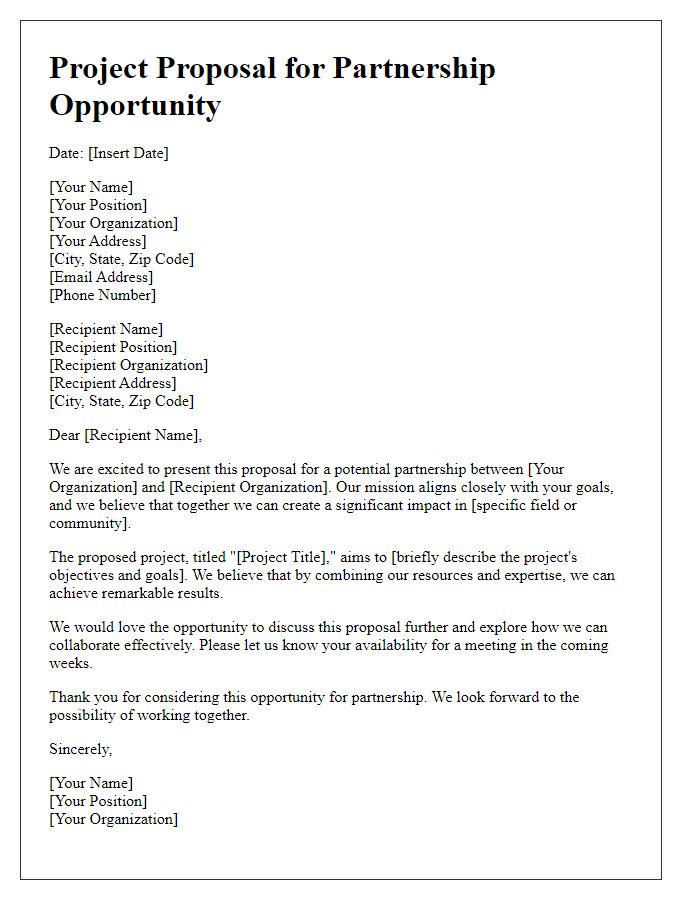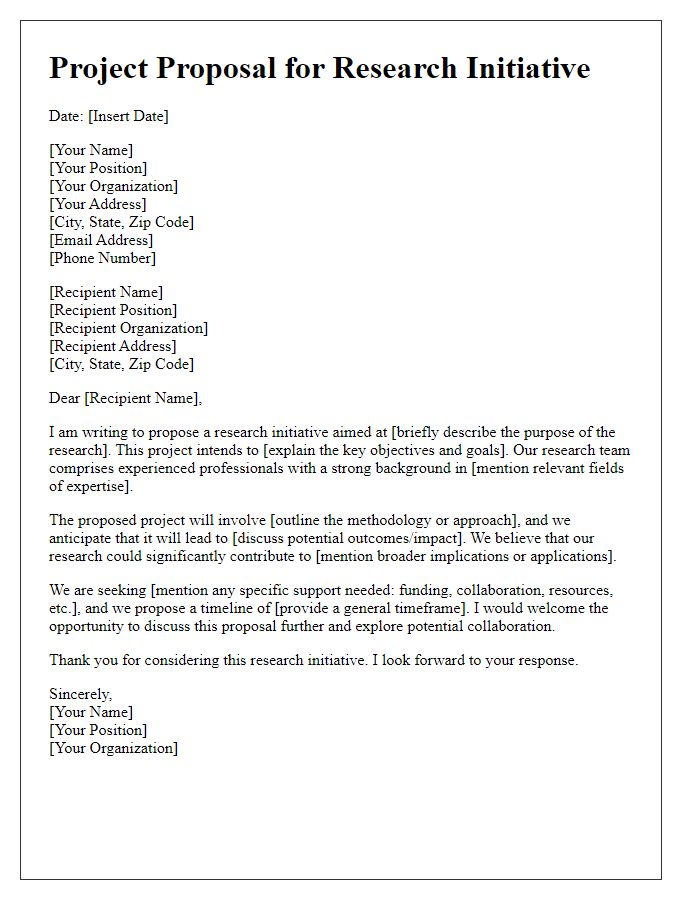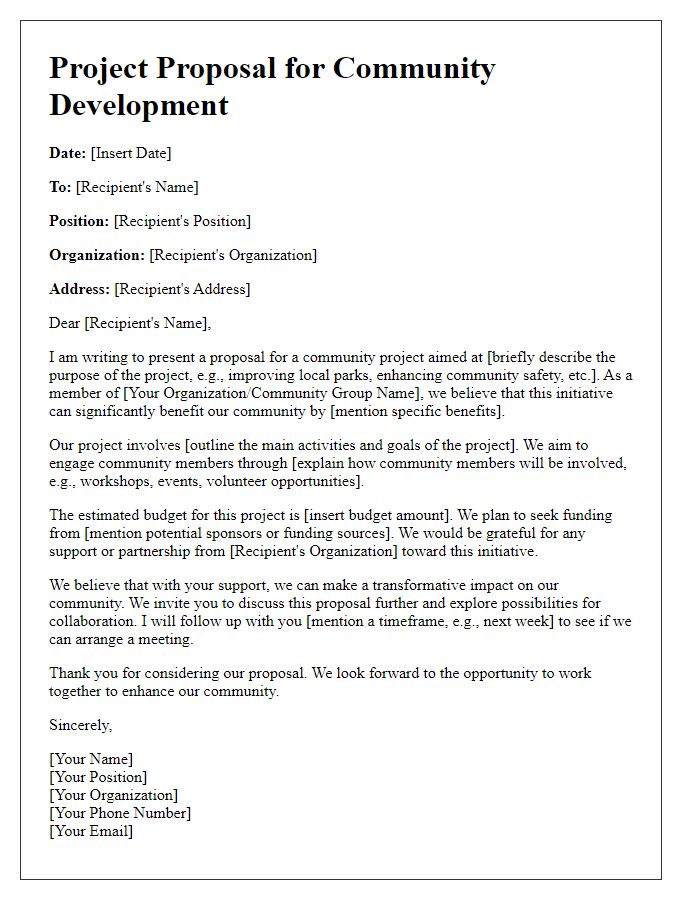Hello there! Crafting a compelling project proposal letter is essential for securing client partnerships and ensuring clarity in your project outline. This template will guide you in presenting your ideas in a professional yet friendly manner, making it easy for clients to grasp your vision and objectives. Ready to elevate your proposals and win over your clients? Let's dive deeper into the details!

Clear Project Overview
A well-structured project overview is essential for setting a solid foundation for client engagement. The project overview outlines the scope, objectives, timeline, and deliverables associated with the initiative. The scope defines the specific tasks and responsibilities involved, ensuring clarity on what is included and excluded. Objectives serve as measurable goals that the project aims to achieve, such as increasing client engagement by 30% within six months. The timeline typically highlights key milestones, deadlines, and phases of the project, often formatted in a Gantt chart for visual clarity. Deliverables specify tangible outcomes expected upon project completion, such as a comprehensive report, digital products, or training sessions, fostering transparency between stakeholders and enhancing project accountability.
Detailed Scope of Work
A comprehensive project proposal outlines specific details of the project's scope to ensure clarity and agreement between the client and the service provider. This document includes essential components such as defined deliverables, timelines for each phase (e.g., initial consultation, research period, implementation, and final review), resource allocation, budget estimates, and communication strategies throughout the project. Furthermore, including metrics for success evaluation, risk management plans, and post-project support ensures that all parties have a thorough understanding of expectations and responsibilities. This detailed approach fosters collaboration and sets a foundation for achieving project goals effectively.
Timelines and Milestones
Timelines and milestones play a critical role in project management, particularly in client engagements. A well-defined timeline outlines specific phases for development, such as research (typically spanning 2-4 weeks), design (3-5 weeks), implementation (4-8 weeks), and testing (2 weeks) leading to the final delivery. Each milestone corresponds to key events in this timeline, such as completion of initial research reports, approval of design prototypes, completion of coding iterations, and final user acceptance testing. These milestones will be strategically scheduled on a Gantt chart, allowing clients to visualize project progression. The timeline will also incorporate buffer periods for unexpected delays, ensuring that deliverables meet deadlines. Engaging with stakeholders during these phases can enhance collaboration and aid in addressing any potential risks promptly.
Cost Estimates and Budget
Crafting a comprehensive project proposal is essential for setting clear expectations regarding cost estimation and budgeting. Detailed cost estimates outline anticipated expenses for labor, materials, and overhead. For example, labor costs could be calculated based on an hourly rate of $50 per hour for 100 hours of expected work, totaling $5,000. Material costs may include quantities of necessary items, such as 200 square feet of drywall priced at $1.50 per square foot, resulting in $300. Including a contingency budget, typically around 10% of total estimated costs, helps address unforeseen expenses, further ensuring financial flexibility. A detailed budget also reflects the project's timeline and deliverable milestones, providing clients a transparent overview of both financial and operational commitments.
Call to Action and Next Steps
To effectively engage your clients regarding project proposals, it is essential to provide a clear and compelling call to action. After presenting your project details, specify direct next steps that guide clients toward making a decision. For example, invite clients to schedule a follow-up meeting within the next week to discuss further details and address any questions, emphasizing the value of collaboration. Outline essential timelines, such as project start dates, phases, or milestones, to create a sense of urgency and prioritization. Additionally, ensure that contact information is readily available, allowing clients to easily reach out. Clear instructions and enthusiasm can enhance motivation for acceptance and collaboration on the proposed project.













Comments